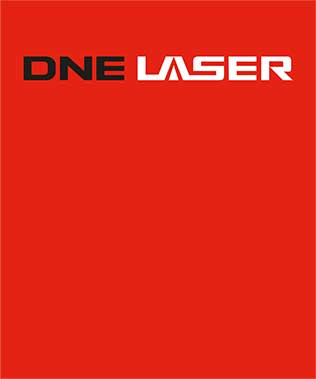Comparison of incisions of common cutting processes
Published:2021-03-10 Browse:98Editor in charge:DNE LASER
The kerf is the width of the kerf, which is the result of material removal during the cutting process.
Almost all cutting processes will leave cutting seams, such as laser cutting, plasma cutting and other thermal cutting methods, as well as mechanical cutting processes such as sawing.The automated nature of the thermal cutting process makes it widely used in engineering. There are also some cutting methods that do not cause material loss, such as shearing.
laser cutting
Laser cutting is a cutting technology that uses laser cutting materials. Because of its high precision and fast speed, it has been widely used. The incision produced by laser cutting is approximately 0.3 mm. Compared with other technologies in this article, this value is the smallest. Therefore, in laser cutting, plasma cutting, water cutting and flame cutting technology, laser cutting technology is the most accurate one.
In laser cutting, there are two factors that determine the width of the cutting slit, that is, the width of the beam and the material. The width of the beam is determined by the focal length set by the laser lens.
Plasma cutting
One of the main limitations of plasma cutting is that it is limited to cutting conductive materials. Therefore, it can only be used on copper and its alloys, stainless steel, iron and other materials, but not plastic, wood and other insulating materials.
Using plasma cutting technology, the smallest kerf value that can be obtained is 1.8 mm. Therefore, it is not as accurate as laser cutting.
The size of the slit is not constant and is affected by many factors. For example, cutting thick materials requires more power, larger nozzles and higher currents, which result in larger slits.
Waterjet cutting
Waterjet cutting uses high-pressure water to cut materials, and sometimes in order to achieve better results, abrasives are mixed in the water. The slit size obtained by water jet cutting is approximately 0.9 mm. This method is more accurate than plasma cutting, but it cannot reach the accuracy of laser cutting.
Flame cutting
This is the most popular choice for cutting thick metal parts. It is also less expensive than a water jet. The principle is to use an electric arc to ignite a mixture of oxygen and fuel (propane, compressed acetylene hydrogen) to create a flame. Flame cutting is only suitable for metals, but it is not suitable for all metals. For example, non-ferrous metals cannot be flame cut.
For flame cutting, the final slit size depends on the thickness of the material. Flame cutting produces an incision of about 1.1 mm, which is more accurate than plasma cutting technology, but lower than water jet cutting and laser cutting.
 Bystronic (Shenzhen) Laser Technology Co., Ltd.
Bystronic (Shenzhen) Laser Technology Co., Ltd.